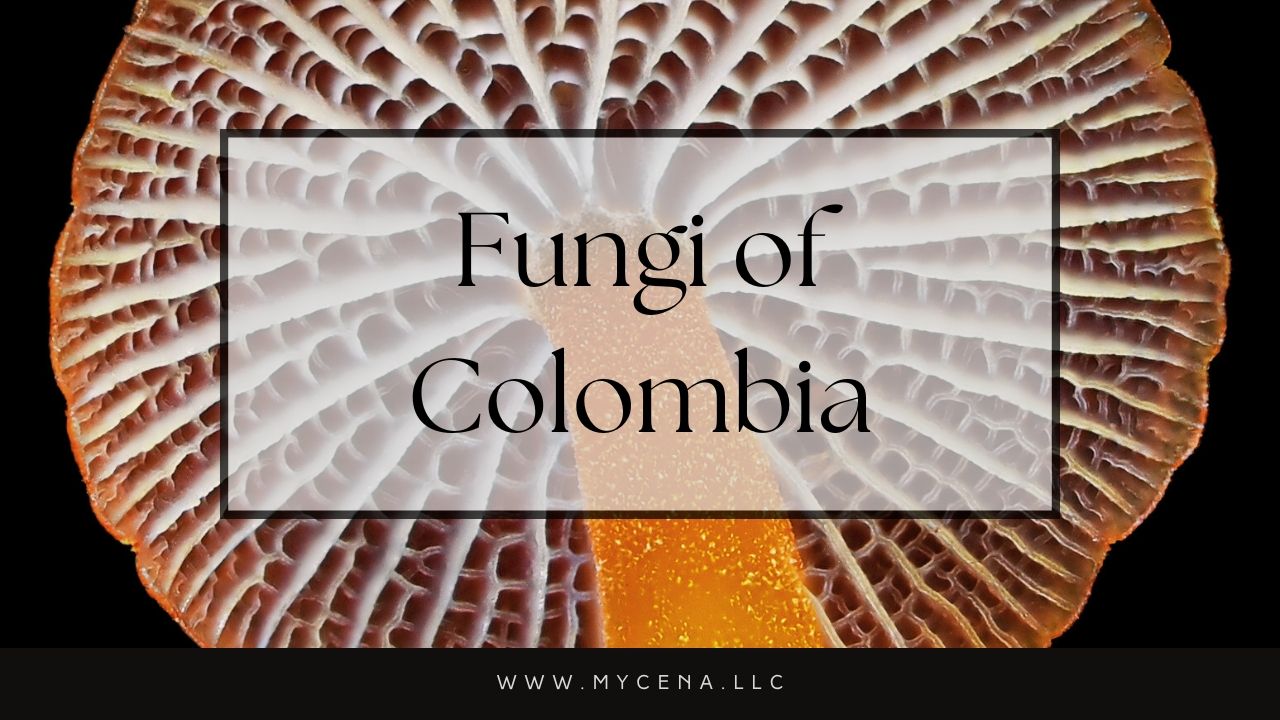Fungi of Colombia: Special Picks from Antioquia and Cundinamarca
Apr 09, 2025
The South American country of Colombia is unimaginably special, topping the charts as 3rd highest in the world on the global biodiversity index. One of only 17 mega-diverse countries on the planet, Colombia’s sometimes-rugged high elevation terrain is still vastly under explored by mycologists. So it’s one of those dream worlds where the mushrooms may appear visually familiar to North Americans or Europeans, but each find is likely a species new to science.
Despite their importance, Colombian fungi remain under-researched due to funding limitations, lack of widespread mycologists collecting samples, and difficulties accessing remote areas. For example, no tropical mycorrhizal fungi genome from South America has been sequenced yet. At Mycena we aim to address these gaps by mapping fungal networks in globally.
ColFungi https://colfungi.org is an open-access portal developed through a collaboration between Colombian mycologists and the Royal Botanic Gardens, Kew. This partnership combined local expertise with global resources to document Colombia's rich fungal diversity and promote its sustainable use. The platform provides detailed information on fungal species, including their taxonomy, ecology, conservation status, and practical applications. As part of the Useful Plants and Fungi of Colombia project, ColFungi supports biodiversity and enchases international knowledge exchange.
Below are is a lilac chanterelles from near Bogata. These special South American periwinkle specimens are likely undescribed and therefore remain new to science.

Metacampanella is a brand new genus, minted in January 2024. In Colombia, its possible members of this genus are under-documented with only 8 observations on iNaturalist for the country so far, with 3 of those being observed by our group in November on our 2024 Colombia trip. This particular beauty could be something close to Metacampanella dendrophora (from Argentina) or Metacampanella costaricensis (from Costa Rica), though it's most likely an undescribed species.

The Amanita below is a special member of section Validae that has a brown cap and is therefore new to science. A similar mushroom, Amanita flaviconia var. inquinata was described from Colombia, but the cap is orange. These mushrooms hatch out of eggs, and the shell remnants hang on and become what is known as the 'universal veil.' In this case, the universal veil is bright yellow, and can be seen in the photo below as the warts on the cap and the mustard yellow top of the abruptly bulbous stem base. These were found under Quercus humboldtii, a common oak species in the cloud forests of Colombia, named after the famous explorer Humboldt. Mushrooms in this section of Amanita have amyloid spores and are non-toxic when cooked.

Below is a photo of Cordyceps nidus, an entomopathogen that parasitizes underground nests of trapdoor spiders, was recently described to science in 2017. The published article is an incredible read, you can check it out in the esteemed open-access journal PLOS ONE.

In addition to describing the species, the authors interrogated the biological activities of this newly-minted spider killer. Cordyceps nidus was deemed to be antimicrobial and have a favorable metabolic profile that includes high cordycepin production, making it potentially suitable for future pharmaceutical applications.
This species is related to Cordyceps militaris and Cordyceps pruinosa, but the color of the stroma can range from light-orange to deep-red. Cordyceps nidus makes a big breakfast of burrowing spiders, so unsurprisingly it is a sister species to Cordyceps caloceroides, the tarantula-eater. I found this particular fire-engine-red specimen by the side of a waterfall in Colombia.
Fungi are integral to sustaining the highly biodiverse ecosystems, such as those in Colombia, which hold immense ecological significance. As research expands into this fascinating kingdom, Colombia’s fungi may hold answers to some of humanity’s most pressing challenges while enriching its natural heritage.
References
ColFungi (2025). "Useful Fungi of Colombia. Facilitated by the Royal Botanic Gardens, Kew. Published on the Internet; https://colfungi.org/
Gaya, E.; Motato-Vásquez, V.; Lücking, R. Diversity of Fungi of Colombia. In Catalogue of Fungi of Colombia; De Almeida, R.F., Lücking, R., Vasco-Palacios, A.M., Gaya, E., Diazgranados, M., Eds.; Kew Publishing Royal Botanic Gardens: Richmond, UK, 2022; ISBN 978-1-84246-790-9. https://www.researchgate.net/Diversity-of-fungi-of-Colombia-In-de-Almeida-R-F.pdf
Moreno-García, M. B., Reyes-Montaño, E. A., Landázuri, P., Sanjuan, T., & Restrepo, S. (2017). Metabolomic profile and nucleoside composition of Cordyceps nidus sp. nov. (Cordycipitaceae): A new source of active compounds. PLoS One, 12(6), e0179428. https://doi.org/10.1371/journal.pone.0179428

